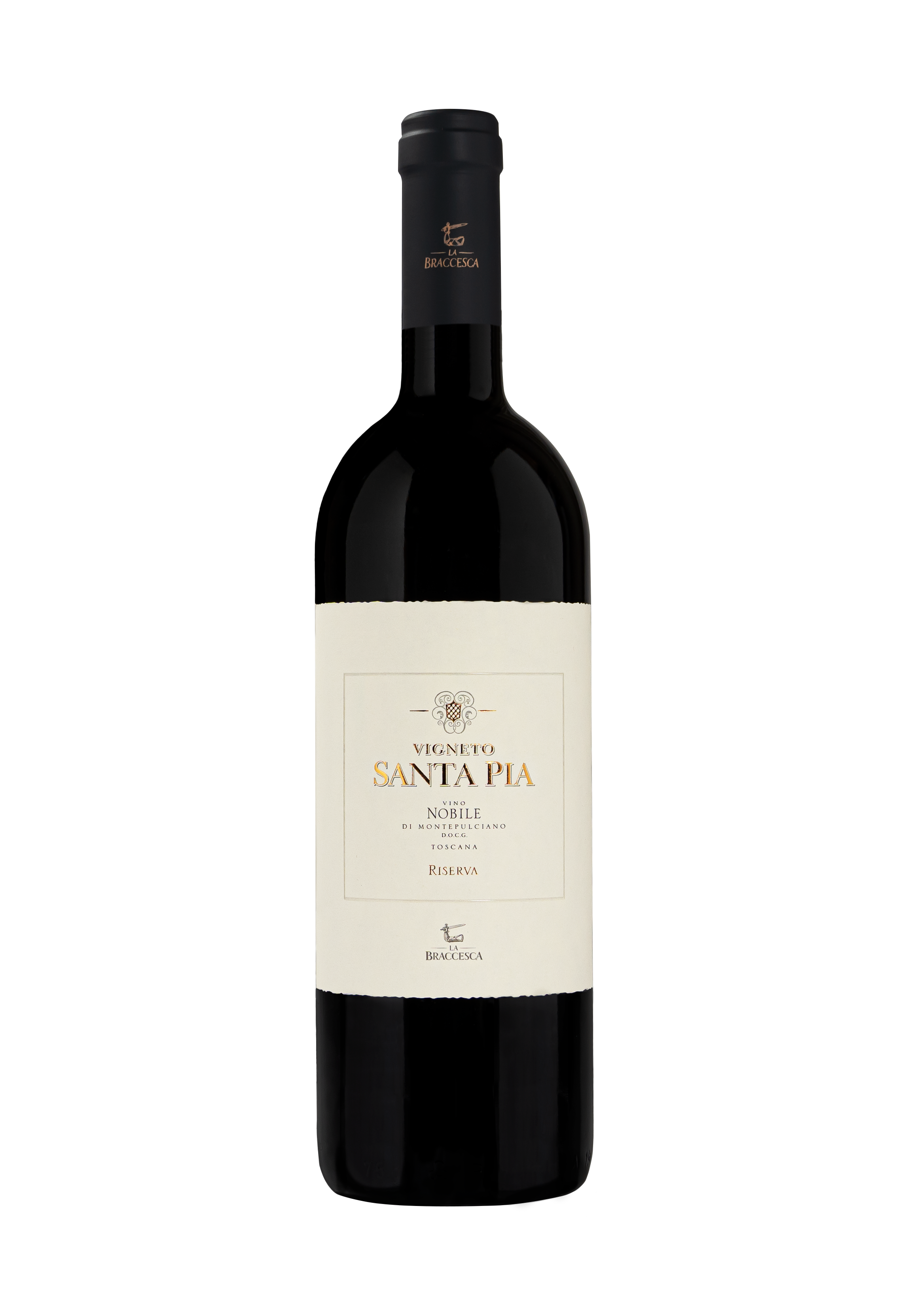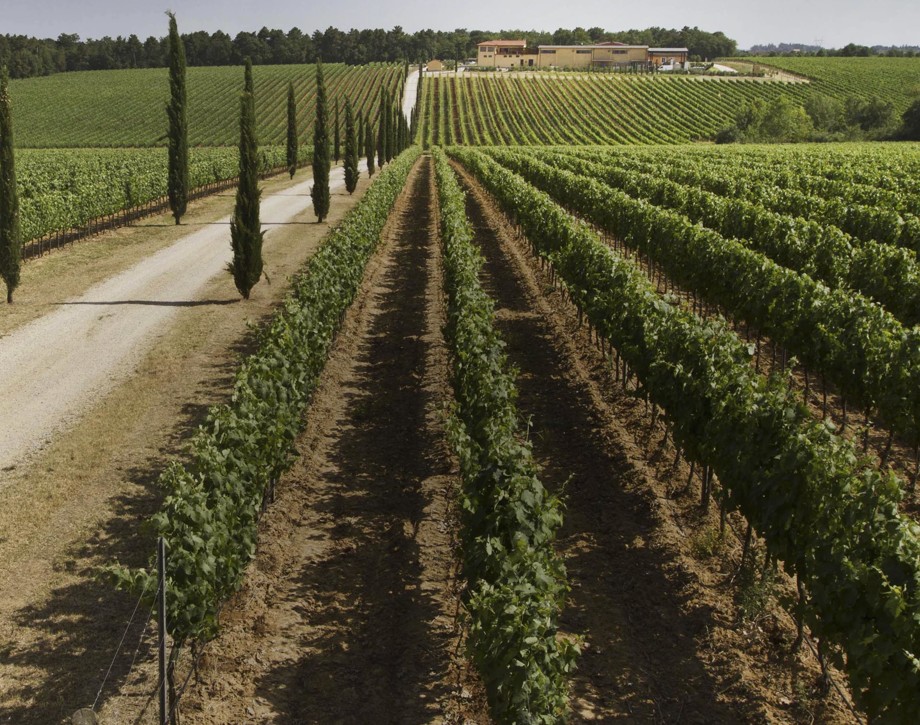Vigneto Santa Pia

Climate
The winter was rather severe, especially with regards to minimum temperatures; while the springtime temperatures, which were quite mild and well-balanced, encouraged good vegetative regrowth. In this year, as had also happened in the previous three years, there was a slight delay in this phenological phase. Fruit setting and flowering took place normally thanks to warm temperatures which were around average. The months of July and August were hot, but without excessive peaks in high temperatures, and thus ripening took place gradually and in a normal manner. The vines nevertheless continued with the slight delay in development, and were harvested a bit later than usual. The consistent availability of water, in line with 2005, permitted the vines to survive the summer season without particular stress. The grapes ripened in a healthy manner and the rains of August did not cause any damage.
Vinification
The grapes, which come from the Santa Pia Vineyard in Montepulciano, have reached the proper point of ripeness between the end of September and the first few days of October. After being collected, the grape bunches were destemmed and gently pressed in order to preserve their integrity and to prevent problems of oxidation of the must. The must was subsequently macerated in contact with its skins for approximately 20 days and completed alcoholic fermentation at a temperature not exceeding 30° C. The wine thus obtained was put into tonneaux of 3 and 5 hl capacity, where malolactic fermentation took place. The wine was then aged for 15 months, during which period it was racked several times. The wine was then bottled and left to age for about 20 additional months.
Historical Data
The La Braccesca estate covers some 1255 acres (508 hectares) where once were located the holdings of the Bracci counts, who gave their name both to the property and its count of arms: an armor-clad arm holding a sword. The overall vineyard surface consists of 850 acres (340 hectares) and is divided into two blocks: the first, 575 acres (233 hectares) is situated on the border between Montepulciano and the neighboring township of Cortona. The second, instead, 255 acres (103 hectares) insize, arrives close to the city itself and includes three highly renowned sub-zones for the production of outstanding red wine: Cervognano, Santa Pia, and Gracciano. Santa Pia is produced from a 37 acre (15 hectare) vineyard situated in the site of the same name, located the terraces below the town of Montepulciano. Its unique soil, medium in texture and consistence, rich in stones and sand, have assisted the ambition to produce an elegant, but at the same time classic, example of Sangiovese, one capable of transmitting the a highly recognizable expression of this historic production zone. The first year of production of Santa Pia was the 2001.
Tasting Notes
With a vivid and intense red color, on the nose Santa Pia 2006 demonstrates all of its complexity, with intense aromas of ripe fruit well combined with vanilla hints deriving from wood contact. On the palate the wine is very smooth and enveloping, with soft tannins in the finish and aftertaste which leaves nice minerality and persistence in the mouth.
Awards
Antonio Galloni 92/100 USA

The Wine
Santa Pia is produced from a 15-hectare (37 acres) vineyard in an area called Santa Pia, located on the ridges just below the town of Montepulciano. This particular area has sandy loamy soils rich in rocky deposits known as “scheletro” that allow the Antinori’s to create an elegant yet traditional expression of the Sangiovese grape that reflects the characteristics of this historic winemaking area. The first vintage to be produced was 2001.

Climate
The winter was rather severe, especially with regards to minimum temperatures; while the springtime temperatures, which were quite mild and well-balanced, encouraged good vegetative regrowth. In this year, as had also happened in the previous three years, there was a slight delay in this phenological phase. Fruit setting and flowering took place normally thanks to warm temperatures which were around average. The months of July and August were hot, but without excessive peaks in high temperatures, and thus ripening took place gradually and in a normal manner. The vines nevertheless continued with the slight delay in development, and were harvested a bit later than usual. The consistent availability of water, in line with 2005, permitted the vines to survive the summer season without particular stress. The grapes ripened in a healthy manner and the rains of August did not cause any damage.
Vinification
The grapes, which come from the Santa Pia Vineyard in Montepulciano, have reached the proper point of ripeness between the end of September and the first few days of October. After being collected, the grape bunches were destemmed and gently pressed in order to preserve their integrity and to prevent problems of oxidation of the must. The must was subsequently macerated in contact with its skins for approximately 20 days and completed alcoholic fermentation at a temperature not exceeding 30° C. The wine thus obtained was put into tonneaux of 3 and 5 hl capacity, where malolactic fermentation took place. The wine was then aged for 15 months, during which period it was racked several times. The wine was then bottled and left to age for about 20 additional months.
Historical Data
The La Braccesca estate covers some 1255 acres (508 hectares) where once were located the holdings of the Bracci counts, who gave their name both to the property and its count of arms: an armor-clad arm holding a sword. The overall vineyard surface consists of 850 acres (340 hectares) and is divided into two blocks: the first, 575 acres (233 hectares) is situated on the border between Montepulciano and the neighboring township of Cortona. The second, instead, 255 acres (103 hectares) insize, arrives close to the city itself and includes three highly renowned sub-zones for the production of outstanding red wine: Cervognano, Santa Pia, and Gracciano. Santa Pia is produced from a 37 acre (15 hectare) vineyard situated in the site of the same name, located the terraces below the town of Montepulciano. Its unique soil, medium in texture and consistence, rich in stones and sand, have assisted the ambition to produce an elegant, but at the same time classic, example of Sangiovese, one capable of transmitting the a highly recognizable expression of this historic production zone. The first year of production of Santa Pia was the 2001.
Tasting Notes
With a vivid and intense red color, on the nose Santa Pia 2006 demonstrates all of its complexity, with intense aromas of ripe fruit well combined with vanilla hints deriving from wood contact. On the palate the wine is very smooth and enveloping, with soft tannins in the finish and aftertaste which leaves nice minerality and persistence in the mouth.
Awards
Antonio Galloni 92/100 USA

Tenuta La Braccesca
The estate’s name comes from the historical farm that once stood there, owned by the Count of Bracci, whose coat of arms appears on the estate’s logo; an arm covered with armor brandishing a sword. Marchesi Antinori acquired the estate in 1990. The property extends over an area of 508 hectares (1255 acres) and the vineyards cover an area of 340 hectares (840 acres) divided into two blocks: the first is 366 hectares (904 acres) of which 237 (585 acres) are planted with vineyards and is located on the border between the cities of Montepulciano and Cortona. The other block is 142 hectares (350 acres) of which 103 (254 acres) are planted with vineyards, it extends all the way to Montepulciano encompassing three of the most famous parcels of land known for the production of great red wines: Cervognano, Santa Pia and Gracciano.

Soil
Sandy loam rich in very fine gravel.
















